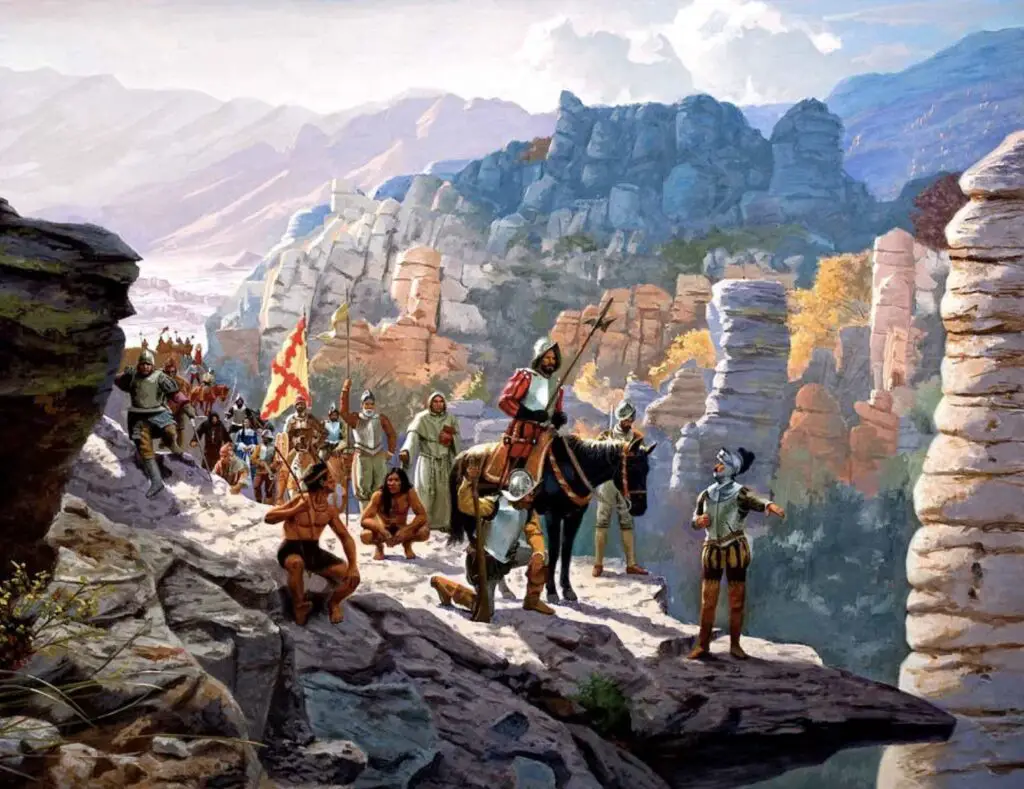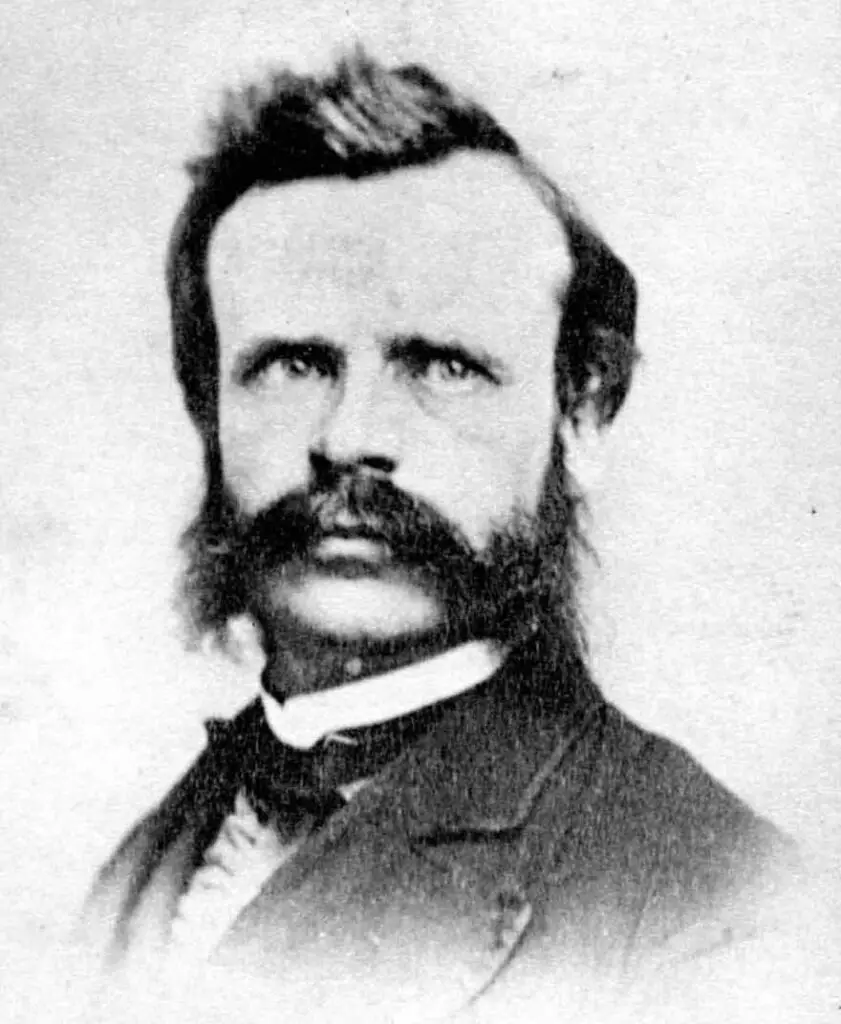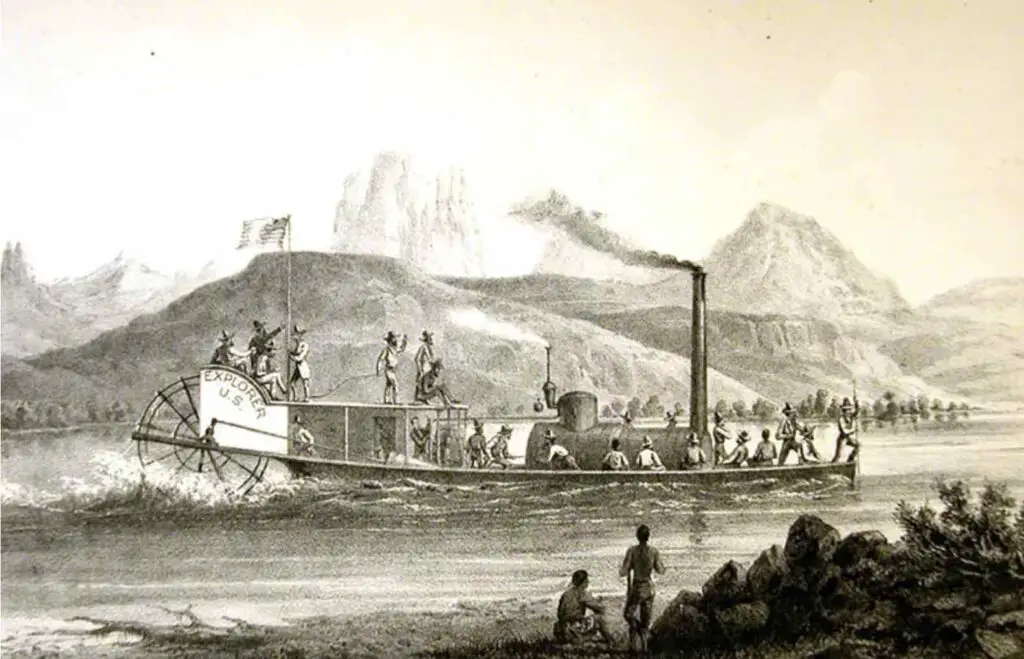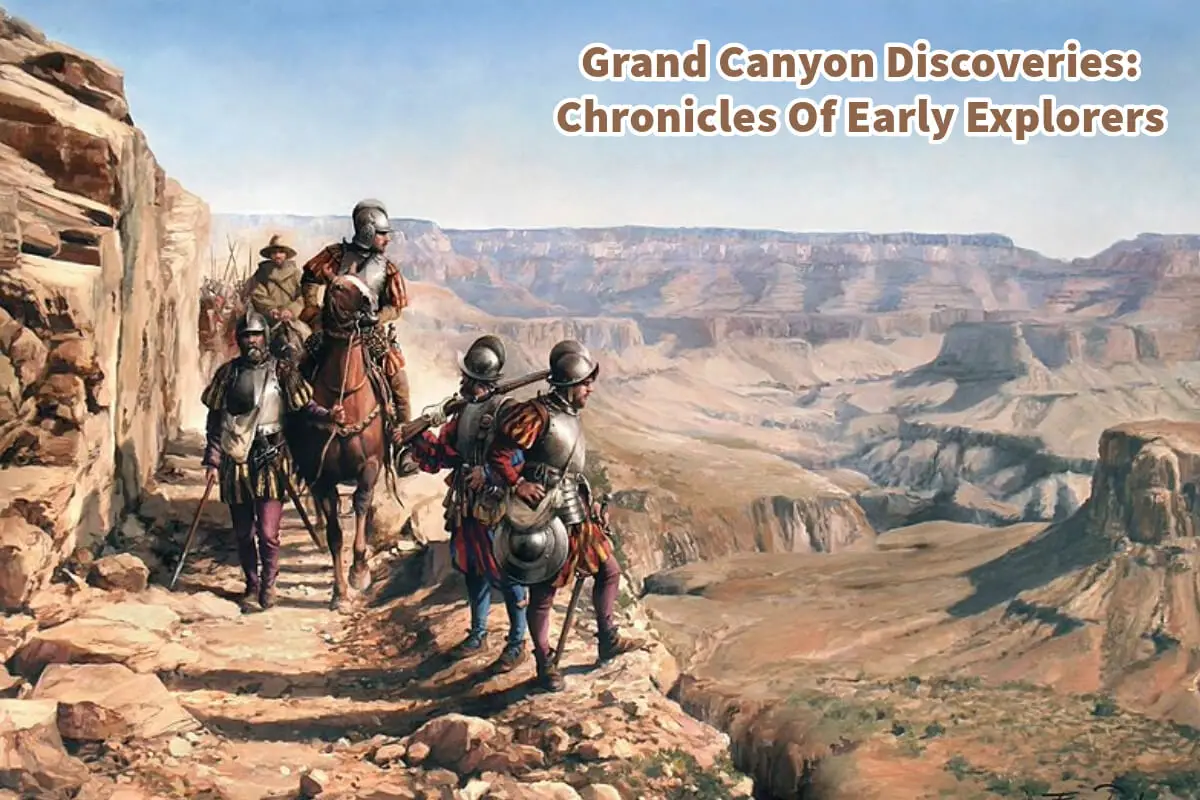The Grand Canyon, considered a marvel of the natural world, has captivated the imaginations of daring explorers eager to plunge into its mysterious depths, often referred to as “The Great Unknown.”
These trailblazers of the Grand Canyon played a crucial role in revealing the canyon’s hidden wonders, the Colorado River’s formidable power, and the sheer scale of this geological masterpiece. Their pioneering journeys have advanced our understanding and ignited people’s exploratory spirit today. Read on as we explore the discoveries of the Grand Canyon.
Table of Contents
- The Discovery And Exploration Of The Grand Canyon: Pioneering Explorers
- The First European Encounters: The Early Spanish Explorers In 1540
- The American Expedition: Joseph Christmas Ives (1857-1858)
- Early Explorers Set The Stage Of What We Know Today
- Related Questions
The Discovery And Exploration Of The Grand Canyon: Pioneering Explorers
The Grand Canyon, one of the world’s natural wonders, has long fascinated explorers willing to venture into “The Great Unknown.”
These early adventurers were instrumental in unveiling the canyon’s secrets, the might of the Colorado River, and the daunting dimensions of the Grand Canyon itself. Their tales of discovery and exploration have left an indelible impact, inspiring generations of explorers who followed in their footsteps.
The First European Encounters: The Early Spanish Explorers In 1540
In truth, the initial European explorers were the ones to bring the Grand Canyon to broader attention. These pioneers were genuine adventurers daring to explore this previously uncharted region of the globe.
Read on as we talk about some of these early explorers
García López de Cárdenas And The Search For The Seven Cities Of Cíbola
Francisco Vázquez de Coronado led a Spanish expedition north from Mexico City in 1540, aiming to find the fabled Seven Cities of Cíbola. After a grueling six-month journey, his army arrived at the Hopi Mesas, located east of what we now know as the Grand Canyon.

A small team led by García López de Cárdenas, accompanied by Hopi guides, was dispatched to locate a “great river.” He is usually considered the first foreigner to come to the Grand Canyon.
Misdirection And First Glimpse
Apprehensive of the Spanish intrusion, the Hopi led Cárdenas and his men on a convoluted route. After a twenty-day trek, the party reached the canyon’s edge. The Colorado River appeared only a mile below them from this vantage point. Shockingly, they estimated the river to be no more than six feet across.
The Attempted Descent And Ultimate Retreat
Cárdenas directed three-foot soldiers to descend to the river. However, they only made it about a third of the way down—approximately 1,500 feet—before realizing their gross underestimation of the river’s size.
After spending three days in futile attempts to find water and reach the river, Cárdenas and his men retreated. Hoodwinked by the Hopi guides, Coronado abandoned further exploration westward, shifting his focus east to Texas.
This left the Grand Canyon largely unexplored for the next 235 years, even though Cárdenas and his men were the first ones to see the Grand Canyon.
The American Expedition: Joseph Christmas Ives (1857-1858)

It was hundreds of years later before the Grand Canyon was discovered again. This great wonder remained unknown to the rest of the world for hundreds of years.
The Great Unknown And Joseph Christmas Ives
By the mid-19th century, the Grand Canyon remained a mysterious void, commonly called “The Great Unknown.” Aware that the Colorado River passed through this uncharted region, the U.S. federal government allocated funds for an expedition to assess its navigability and potential as a trade route.
So, the US government assigned some explorers to discover more about this territory.

The Journey Of The Explorer Steamboat
Army First Lieutenant Joseph Christmas Ives of the U.S. Army Corps of Topographical Engineers took on the daunting task. Steering the fifty-foot sternwheel steamboat named the “Explorer,” Ives aimed to navigate upstream from known territories into uncharted waters.
Mishaps And Continued Exploration Of Joseph Christmas Ives
Unfortunately, the steamboat crashed just below Black Canyon, falling short of the Grand Canyon. Undeterred, Ives continued another thirty miles upriver in a boat.
He journeyed on foot, eventually descending into the canyon at Diamond Creek, today part of the Hualapai Indian Reservation.
Early Explorers Set The Stage Of What We Know Today
These early explorers set the stage for what we know today about the Grand Canyon, acting as forerunners in scientific, cultural, and geographical understandings of this vast geological feature.
By mapping the unknown terrains, documenting their observations, and surviving many challenges, they created a foundational body of knowledge crucial for subsequent research and explorations.
Here are some ways the early explorers set the stage for the Grand Canyon.
Scientific Contributions
The information gathered by early adventurers helped geologists better understand the formation and structure of the Grand Canyon.
Their sketches, measurements, and accounts were among the first to provide data about the canyon’s depth, the course of the Colorado River, and the various rock layers that make up its walls. This data laid the foundation for modern geological studies and environmental assessments.
Cultural Impact
Their journeys also revealed the area’s cultural and historical significance, revealing indigenous peoples’ presence and traditions. This piqued interest in ethnographic research, while their tales of adventure stirred public imagination, turning the Grand Canyon into an enduring symbol of the American frontier spirit.
Inspiring Future Generations
The inherent courage, curiosity, and thirst for discovery exhibited by these early explorers have become iconic qualities that inspire modern adventurers. Today’s explorers have far more advanced tools and technologies, but the fundamental drive to explore, understand, and document remains the same.
Whether rafting down the Colorado River, scaling the cliffs, or conducting scientific research, modern explorers stand on the shoulders of those initial adventurers.
Continuation Of Exploration
The exploration of the Grand Canyon is a continuing endeavor. Despite our advanced technologies, parts of it remain little understood, and discoveries are still being made.
Whether finding a new species of flora or fauna or identifying previously unknown water sources, the exploration spearheaded by early adventurers has never ceased.
The early explorers of the Grand Canyon were not just adventurers but also cartographers, ethnographers, and naturalists. Their invaluable contributions transcended their era, laying the foundation for a multidisciplinary understanding of one of the world’s most remarkable natural wonders.
Their legacy of curiosity and discovery continues to fuel the aspirations of explorers today, ensuring that the Grand Canyon will continue to be a focal point for human inquiry for generations to come.
These early explorers laid the groundwork for the modern understanding of the Grand Canyon. Their arduous journeys through uncharted territories serve as a testament to human curiosity and the quest for knowledge, qualities that continue to drive explorers today.
At A Bus On A Dusty Road, we talk about travel, life, and ex-pat living. We are all about “Living Life As A Global Citizen.” We explore social, cultural, and economic issues and travel.
We would love to have you be part of our community. Sign up for our newsletter to keep up-to-date by clicking here. If you have any questions, you can contact me, Anita, by clicking here.
Listen to our Podcast called Dusty Roads. You can find it on all major podcast platforms. Try out listening to one of our podcasts by clicking here.
Subscribe to our A Bus On A Dusty Road YouTube Channel with great videos and information by clicking here.
Related Questions
Is A Day Trip To The Grand Canyon Worth It?
If you only have one day to visit the Grand Canyon, it is still worth visiting. You can do things to prepare for your trip so that you will have the most time available. We recommend you go to see the South Rim area of the Canyon.
By clicking here, you can discover Is A Day Trip To The Grand Canyon Worth It?.
How Big Is The Grand Canyon? & Other Grand Canyon Questions
The Grand Canyon area is 277 miles long or about 1,904 square miles. It is a vast area that will take you 5 hours or 215 miles to travel from the North Rim to the South Rim of the Grand Canyon. Most of the area does not have hiking or other trails. As the Grand Canyon took about 6 million years to create, it is one of the world’s natural wonders.
By clicking here, you can discover How Big Is The Grand Canyon? & Other Grand Canyon Questions.
Was The Grand Canyon Once Totally Filled With Water? & More
The Grand Canyon was once filled with water, but the Grand Canyon itself is at least 6 million years old. The rock and rock formations of the Grand Canyon help us to tell the story of this magnificent place on earth.
By clicking here, you can discover Was The Grand Canyon Once Totally Filled With Water? & More.


